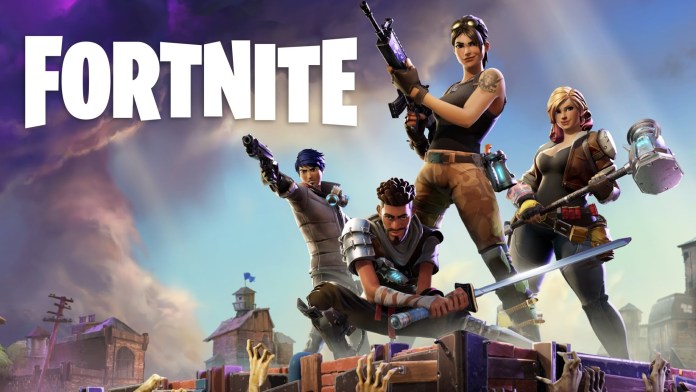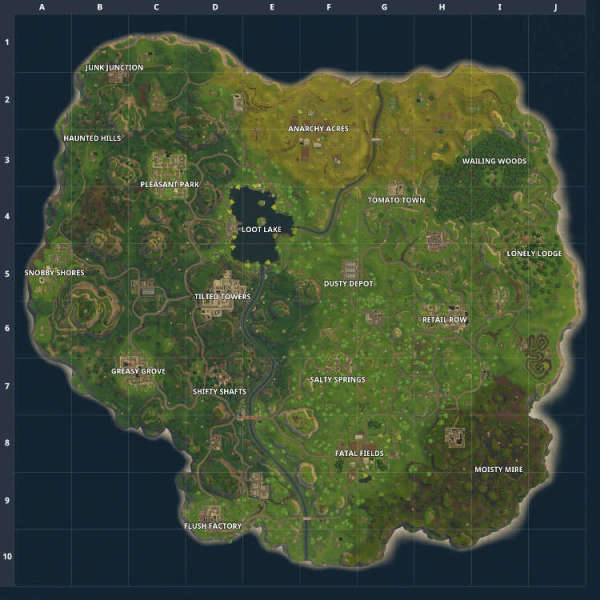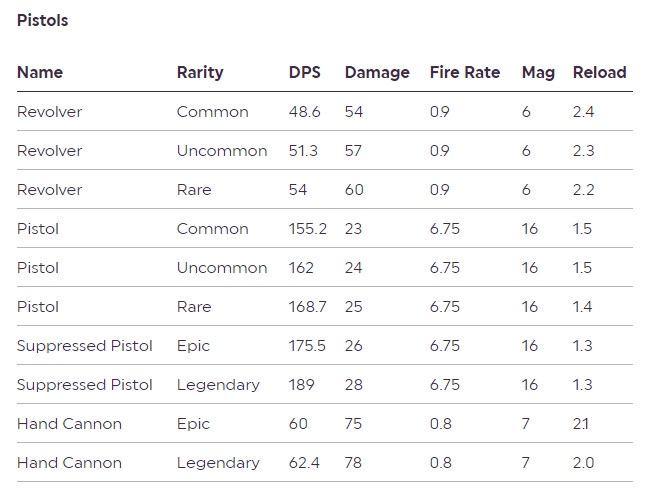A Teacher’s Guide to Surviving Fortnite

Quick: name the highest grossing entertainment product of all time. No, it’s not Titanic or Avatar. It’s not the Beatles’ Abbey Road. It’s a video game. Grand Theft Auto V. GTA V has sold 85 million copies and grossed more than 5 Billion dollars. That’s more than double the highest grossing film of all time, Avatar, which only grossed a measly 2.7 Billion.
Round 2: The Superbowl is the most watched sporting event every year. Name the second most watched sporting event of 2017. If you said League of Legends, a video game tournament, you’re right. In fact, 3 out of the top 10 most watched sporting events last your were eSports. By 2020, more people will watch eSports than any other professional sports league besides the NFL.
Did you know North Korea’s Rungrado 1st of May Stadium is the world’s largest stadium with a capacity of 150,000? Probably not, but I’ll bet you did know that when the god of Fortnite, Ninja, played squads with rappers Drake and Travis Scott and Pittsburgh Steeler’s receiver JuJu Smith-Schuster on Twitch, they had over 667,000 concurrent viewers. That’s enough people watching them play a video game to fill the 1st of May Stadium more than 4 times. I know this because my students know this.
If you’re like me, Fortnite mania has taken over your classroom. I can’t take attendance in my classroom without a kid doing the Jubilation Dance in my direction. If all the Fortnite pandemonium has you confused, here is a great video that explains what Fortnite is in 60 seconds.
Now that you are a Fortnite pro, you can accept this cold, hard fact: nothing you do will stop Fortnite mania. Nothing you can do will stop the video game and eSports revolution. Most of your students probably think they’re going to stream for a living and be progamers. And while the pathway to being a pro streamer, progamer, and even earning a college scholarship for eSports is getting easier, it is getting harder to teach in a post-Fortnite classroom. How can you survive Fortnite? Embrace it. We owe it to our kids to embrace what they care about.

I’m not saying you should let kids play Fortnite in school, though I’m not opposed to it, I’m saying we should explore every avenue in embracing student’s passions to better their learning. There are many meaningful ways Fortnite can be used in the classroom without even installing the game. Fortnite writing prompts are easy to construct. Familiarize yourselves with some of the locations, then watch your students’ faces light up when you ask them to “Describe your experience traveling from Lucky Landing to Tilted Towers” or “You just landed late in Greasy Grove. The only loot you can find are bandages, a trap, and a Boogie Bomb. What happens to your character next?”. All styles of writing about Fortnite are possible with enough imagination. For other subjects, you can create Fortnite masterpieces in art, you can do the Fortnite Boogie Down Challenge in Gym, run Fortnite experiments in Science, but where embracing Fortnite really shines is Math.
You’ll be stunned at the amount of number crunching done by gamers for video games like Fortnite. Here’s a few examples.
Tech & Learning Newsletter
Tools and ideas to transform education. Sign up below.
A topic of debate in Fortnite is the best way to land. The faster you land, the more likely you are to live because you’ll get to the guns first. Want to start an engaging debate with your students? Ask them: “Once your jump out of the Battle Bus, what is the best angle of approach to take if you want to land at Tilted Towers first?” It may sound obvious, a straight line, but it is not. There are game mechanics, like gliding and fall rate, to be taken into account. Here’s a video that shows what the debate sounds like. Can your kids make a video using their Math skills that settles the debate once and for all?
[Flexibility in the Gamified Classroom]
Here’s what else is cool. The first comment for the above video, at the time of this writing, says, “Can you do a video explaining the probability of loot locations and rarity?” He’s asking about Maths! This commenter is asking this question because all loot spawns in Fortnite only have a certain percentage chance of showing up. Meaning you have a higher probability of getting good loot in different place at different times. Further, the rarity of that loot, from common to legendary, has a certain percentage chance of spawning. “What is the probability of not only getting a chest to spawn at Tomato Town, but getting that chest to spawn a legendary shotgun?” is a question your students might be interested in. Data on loot spawn rates, locations, their rarity, and probability of showing up, in gamer lingo, is called a loot table. A loot table is important to a player because areas with high probability of good loot are ideal landing areas especially if it is in an area that doesn’t draw a lot of other players looking to kill you. Here is a whole site someone made, using crowd-sourced reporting, to start to put together data for a loot table in Fortnite, since the makers won’t reveal the real data. Could your students do something similar?

Like loot tables, weapons tables tell players everything they’d want to about weapons in Fortnite. Fortnite has a variety of different weapons that come in different tiers of rarity. The more rare the weapon, the more damage it does. Probably the most important things to know about weapons is their DPS, or damage per second. If you take the damage from one shot of a weapon and multiply it by its rate of fire, you’ll get the weapons DPS, how much damage it can do every second. Usually, the higher the DPS the better weapon. If a weapon has a low DPS, it is generally considered a burst weapon, meaning it puts out damage in a burst since it fires so slowly. In Fortnite, sniper rifles and shotguns have high burst. While sub machine guns have a high rate of fire but low damage. Assault rifles have medium dps, but are the most accurate. Throw in grenade and missile launches, and all bets are off. We haven’t even talked about head shots which do double damage when hit. What’s important is understanding you’ve probably overheard hundreds of debates in your class about what is the best weapon for a given situation in Fortnite. What if the kids made weapons table and proved it?
These are just three of the biggest debates in Fortnite that could be used in Math class. Here’s so more food for thought: Fortnite is played on a 10 x 10 grid, 100 square map, with 100 players. Each square on a Fortnite map is 250m x 250m, making the map 2500m x 2500m. It takes 45 seconds to run across a single square horizontally and vertically and 64 seconds to run across a single square diagonally. How many math problems can you make for students knowing this information? Could you teach them how to calculate when they should start to run for a safe zone using that information?
Here’s more: the Math that can be taught in Minecraft: Education Edition can be taught in Fortnite. A block in Minecraft is 1m cubed. A Build Tile, the things used to build forts in Fortnite, are 5.12m cubed (when you build a cube out of them). You can do lessons on area, volume, fractions, and more with that information. Almost any Math lesson made for Minecraft, and there are a ton out there, can be used in Fortnite.
Fortnite is free to play and will soon allow you to make custom servers that only your students can join. I haven’t taught with Fortnite, and I don’t have all the best examples or all the answers for using it in the classroom, but I believe in using what kids are passionate about to get them excited about learning. Can you learn to embrace Fortnite? I hope so because phenomenons like Fortnite aren’t going anywhere. They’ll only be more frequent – Harry Potter Go! launched today. The only way we teachers can survive it all, is if we embrace what students love and use it in the classroom. If you’re not sure how to incorporate Fortnite into your classroom, ask your students. I’m sure they’d be happy to help you.
Until next time,
GLHF and let me know if you want to run squads in Fortnite with me. I’ll teach you how to beat your kids!
cross-posted at Teched Up Teacher
Chris Aviles presents on education topics including gamification, technology integration, BYOD, blended learning, and the flipped classroom. Read more at Teched Up Teacher.
Chris Aviles is a STEM teacher, edtech specialist, and president of Garden State Esports. He is also a regular contributor to Tech & Learning.
